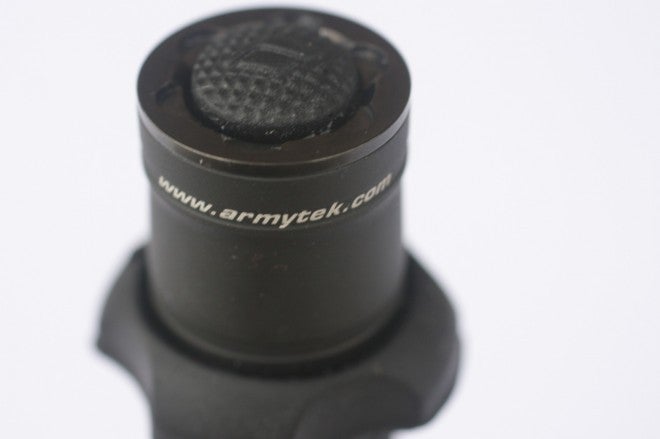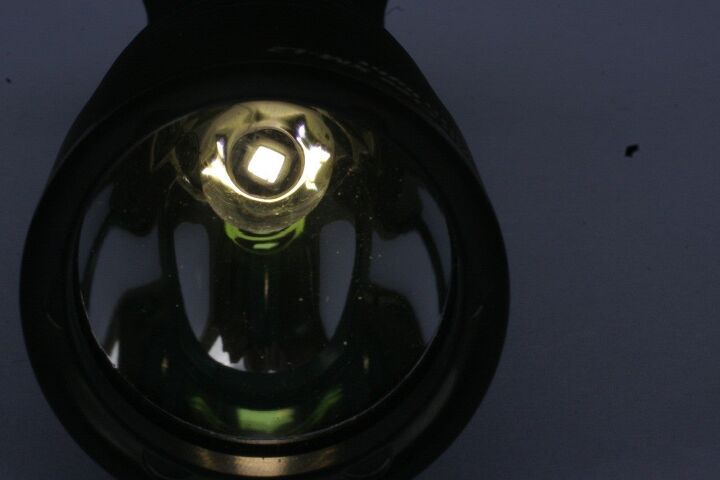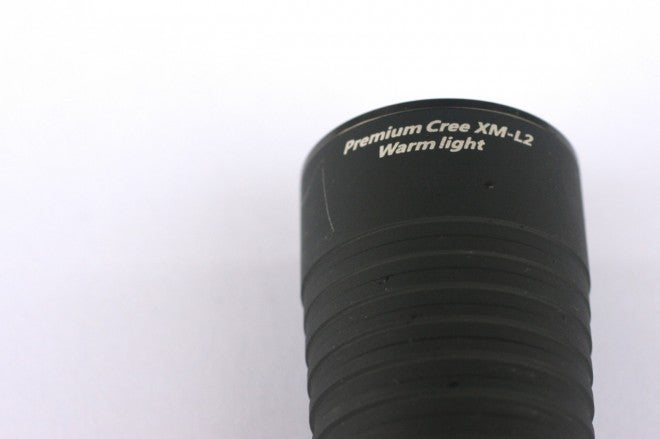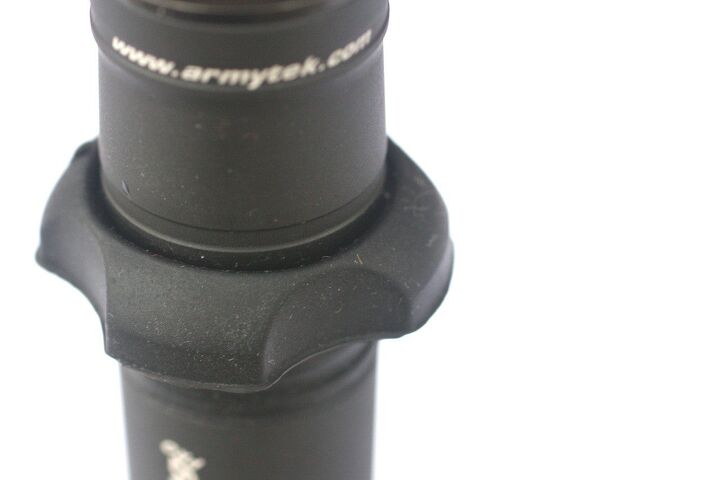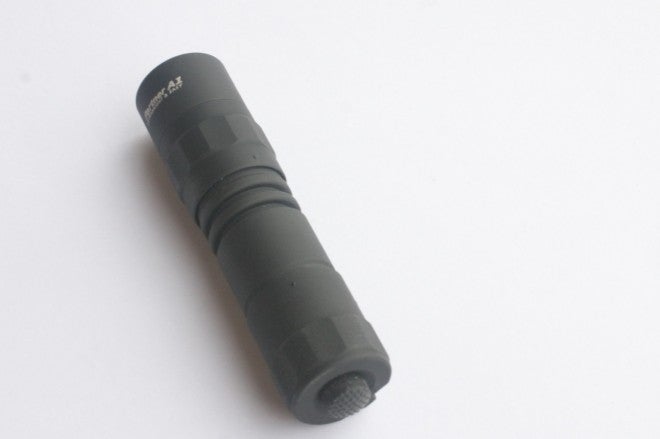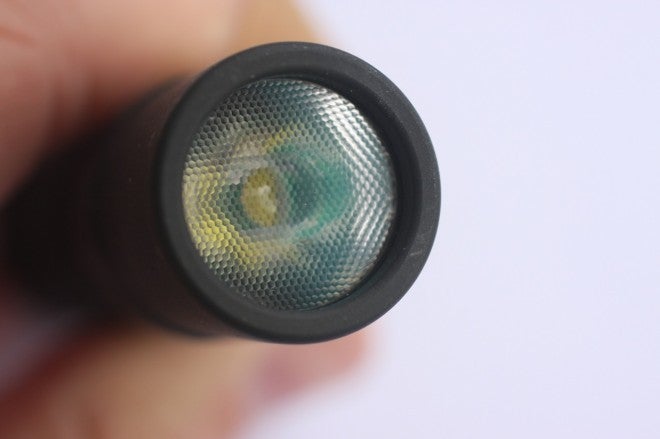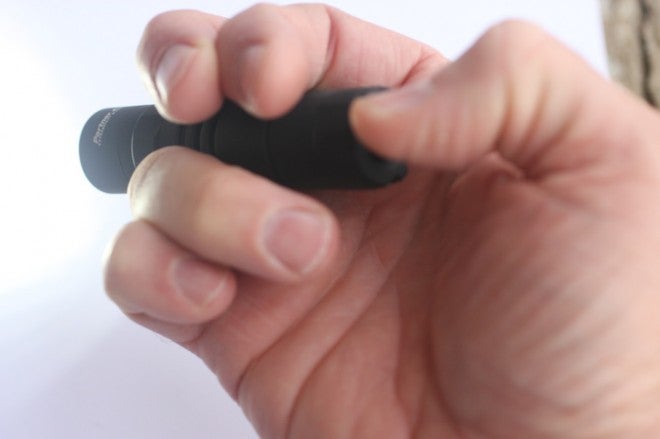After years of obsessing over cool flashlights – both custom and production – surprises rarely come my way, especially as related to production lights. Such a surprise recently came my way however, when 2 ArmyTek flashlights arrived for review.
First a bit about ArmyTek: a Canadian company with global operations, ArmyTek has a business model based on designing and producing high quality lighting tools focused on hunting and military, search and rescue, and ‘outdoor’ activities.
The focus on quality construction is evident in the two samples that they sent. Both were manufactured in China and the quality of manufacturing is, in my opinion, top notch.
I chose these two particular flashlights for simple reasons: as with firearms, it’s difficult to pick just ONE… rarely can one serve every need. Most occupational or recreational users of lights such as these need lights that provide high levels of brightness, the ability to project the beams a decent distance as well as provide near field or flood lighting, good battery run times, multiple levels, ease of use, rugged construction, small enough to carry at all times and certainly a few other things I didn’t mention. In my opinion, having the combination of these two lights should cover just about any of the aforementioned needs and more.
Some features common to both lights:
- Aircraft Grade Aluminum
- Premium type III hard anodizing 400HV
- Matte Black Premium Anti-Slip Surface Treatment
- Waterproof and Dustproof to IP68 Standard
- 10 year manufacturer’s warranty
There are other commonalities – these are but a few.
One of my favorite things about both lights is the matte anti-slip treatment. The lights have a soft, easy-to-grip ‘feel’ about them. Neither light has a lot of milled in rings, ridges, etc. (the Viking does have a rubber ‘cigar ring’ – more on that later), but still are easy to hold. For the past couple of weeks both lights have been used around the house as well as walking the dog and my appreciation for this grippy feel has grown.
Now let’s take a detailed look at each light.
Viking Pro 2.5 XML2 “Warm”
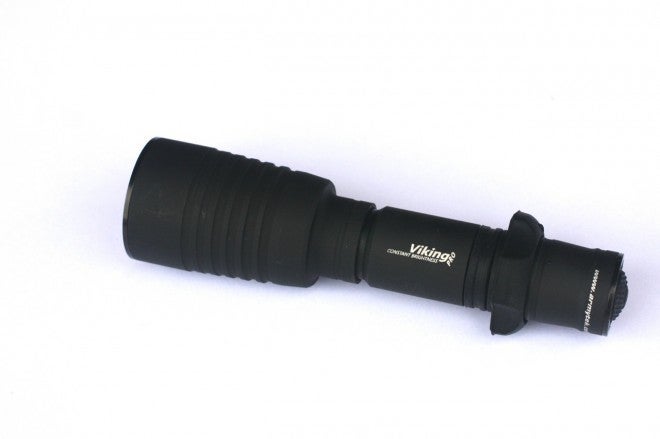 This light was chosen with the thought of it being a primary light. My appreciation for the light and its useful features has only increased as I have put it through its paces.
This light was chosen with the thought of it being a primary light. My appreciation for the light and its useful features has only increased as I have put it through its paces.
If you have used or are using any of the less expensive lights utilizing the Cree XML emitter, you may have noticed that the tint of the beam is very cool – sometimes even with a sickening greenish tint. One of my favorite lights, the Surefire E2DL Ultra (not inexpensive!) suffers from this greenish tint as much as any recent light I have used. And as mentioned, many have a very cool, white or blue/white tint. Most people will notice that this tint can reduce depth perception and render outdoor colors flat and unnatural. On the other hand, cool tint lights are typically perceived as being brighter, and with all other things being equal they typically are slightly brighter – but not enough for the human eye to actually be able to discern (you typically need at least a 50% increase in lumen output for the human eye to actually perceive the difference – especially at the higher outputs.)
This light uses the Cree “neutral white” XML2 T6 LED with a ‘warm’ 4000K tint rating. This tint is visually appealing to me and as you can see in the following comparison photos, it renders – at least to me – more pleasing colors. So in the following animated gif you see a control shot of my back yard and my storage building, then the old familiar Surefire E2E Incandescent, the Surefire E2DL Ultra (rated at ~500 lumen), ArmyTek Partner (reviewed further down in this post), and the ArmyTek Viking XML2 Warm. Incidentally, the grass in my yard has gone dormant for the winter so it is that pale shade. The “lump” in the daylight photo is my 10 year old Sheltie, “Heidi.”

Animated Gif
Specifications are too lengthy to list, but you can view them HERE.
The warm tint helps with depth perception as well. I can see this light being useful for virtually any application – law enforcement, military, camping, general use – whatever. I use it primarily for walking my dog at night as well as checking out my property at night. It has a powerful and penetrating spot while maintaining a nice amount of spill.
Operation is very simple yet provides a number of useful settings. This is a raised, forward clicky style switch. A light press engages the beam temporarily, and since the light has mode memory it will come on in the last mode used. Further press to engage the ‘click’ and the light will remain on.
Where it really shines (no pun intended) is in the mode switching. It is smart and simple. With the head fully tightened, simply twist the head loose about an 1/8 of a turn then retighten – each time you do this you engage the next level. According to ArmyTek the levels are about 6, 180 and 760 lumen (using 2 3.7V batteries.) My integrating sphere concurs with those ratings. Where the ‘genius’ come in is in the second mode. Simply loosen the head 1/8 turn and leave it there – then the “firefly” mode…
…will engage providing you with a little over 1 lumen of light. Do a quick tighten and back and you have an obnoxious (in a good way) strobe. Why do I call this “genius?” It allows you to be certain that you are switching the light on (if needed) in the lowest mode possible – you don’t have to remember the last level of brightness – just loosen the head before you switch it on and you have the low level. Tighten it and you are back to the last level among the 3 higher levels. In a dark room – whether a tactical situation or simply not wanting to flood your dark house with light in the wee hours, it’s handy being able to be certain that the level is low.
A lot of words to describe all this but you will most likely find this feature as useful as I do. Plus I love the ease of switching modes, and the twist action is buttery smooth.
ArmyTek touts their stable voltage regulation as well as thermal regulation. I haven’t formally tested it, but my sphere did show the same output regardless of the remaining voltage on the batteries…in my case from the 4.2V for both batteries (AW black label RCR123) at full charge down to around 3.8 each.
Battery choices are flexible – 1 18650, 2 18350, 2 16340 or 2 ‘primary’ 123 cells. Batteries can be button top or flat top.
The light is supplied with a nice holster, clip, lanyard, rubber grip ring, ring to use in place of the grip, 2 extra o rings and an extra switch boot. It is very attractively priced on the ArmyTek web site and is available at many online retailers. The lights may also be available at brick and mortar retailers but I have not found them.
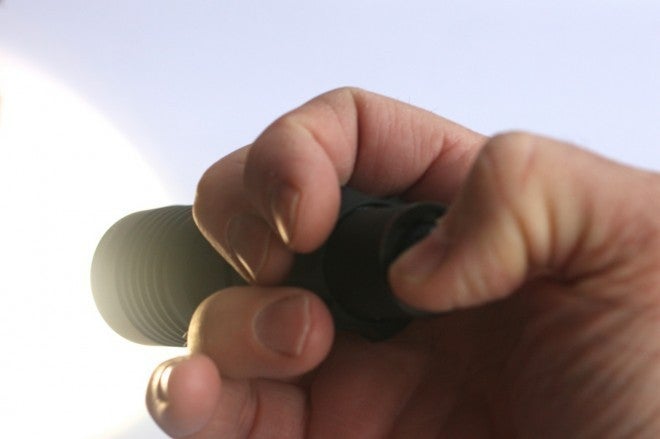 All in all this is a very nice light that can serve many needs.
All in all this is a very nice light that can serve many needs.
But many of us like to have a backup, or a small “every day carry” light. For this I like this Partner A1 XML.
This little light uses the ubiquitous AA battery – or to really ramp it up you can use a lithium ion (or IMR) 14500 cell. The light has 2 settings, no ‘disco’ modes – just a good, simple light. Activation by clicking the light on…mode change by either lightly pressing the tail switch while on, or rapidly cycling on and off.
As far as levels, ArmyTek rates it at 260 lumen high, 85 low. In my integrating sphere I measured with both a simple alkaline battery and an AW protected 14500 lithium ion battery. With the alkaline the light produced 200 high / 45 low. But when using the lithium ion battery it measured 330 high / 140 low. So you can use rechargeable lithium ion batteries for maximum output, rechargeable batteries such as Sanyo Eneloops for with lower output but the ability to recharge, or pressed into a situation where such cells are unavailable, you can use the common and readily available AA.
The tint of this LED emitter is more on the “cool” white side…no traces of green that I can see. ArmyTek uses a TIR Optic (Total internal reflection) as well as a flood type lens to focus then disperse the light – a claimed 50 degree spot with 90 degree spill keeps the light in what I refer to as “floody focus”. The lens causes some slight artifacts near the edge of the beam if viewed against a white wall, but in real world use the beam is very nice for close range floody lighting.
The Partner’s current regulation is referred to as “semi”, and I could see that when measuring output in my sphere. With extended runs I could watch the output drop ever so slightly as time passed.
This will make a great backup light / EDC. Small enough to disappear unobtrusively in your pocket, yet large enough for my large hands. And the matte finish mentioned early in the review ensures that you can retain a good grip on the light. And this light can be had for less than $50, including light, holster, lanyard, extra tail switch boot and 2 o rings.
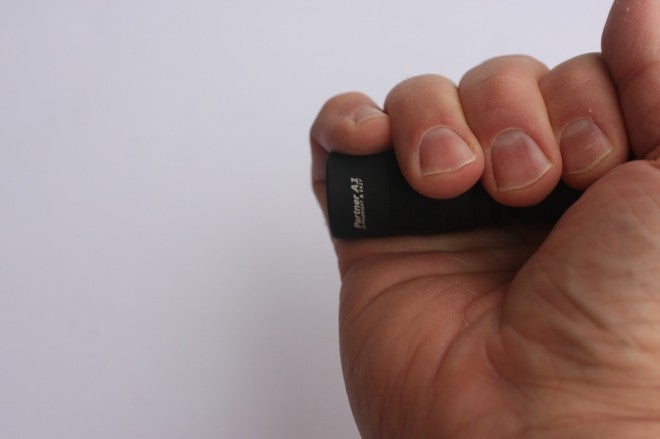 You have probably already figure this out, but I really like these lights. I appreciate the quality of construction, versatility and ease of operation. The output levels coupled with the quality of the beams should cover the needs of most users. Couple that with the very reasonable prices and the 10 year warranty and these just might be the answers for many users.
You have probably already figure this out, but I really like these lights. I appreciate the quality of construction, versatility and ease of operation. The output levels coupled with the quality of the beams should cover the needs of most users. Couple that with the very reasonable prices and the 10 year warranty and these just might be the answers for many users.
 Your Privacy Choices
Your Privacy Choices

